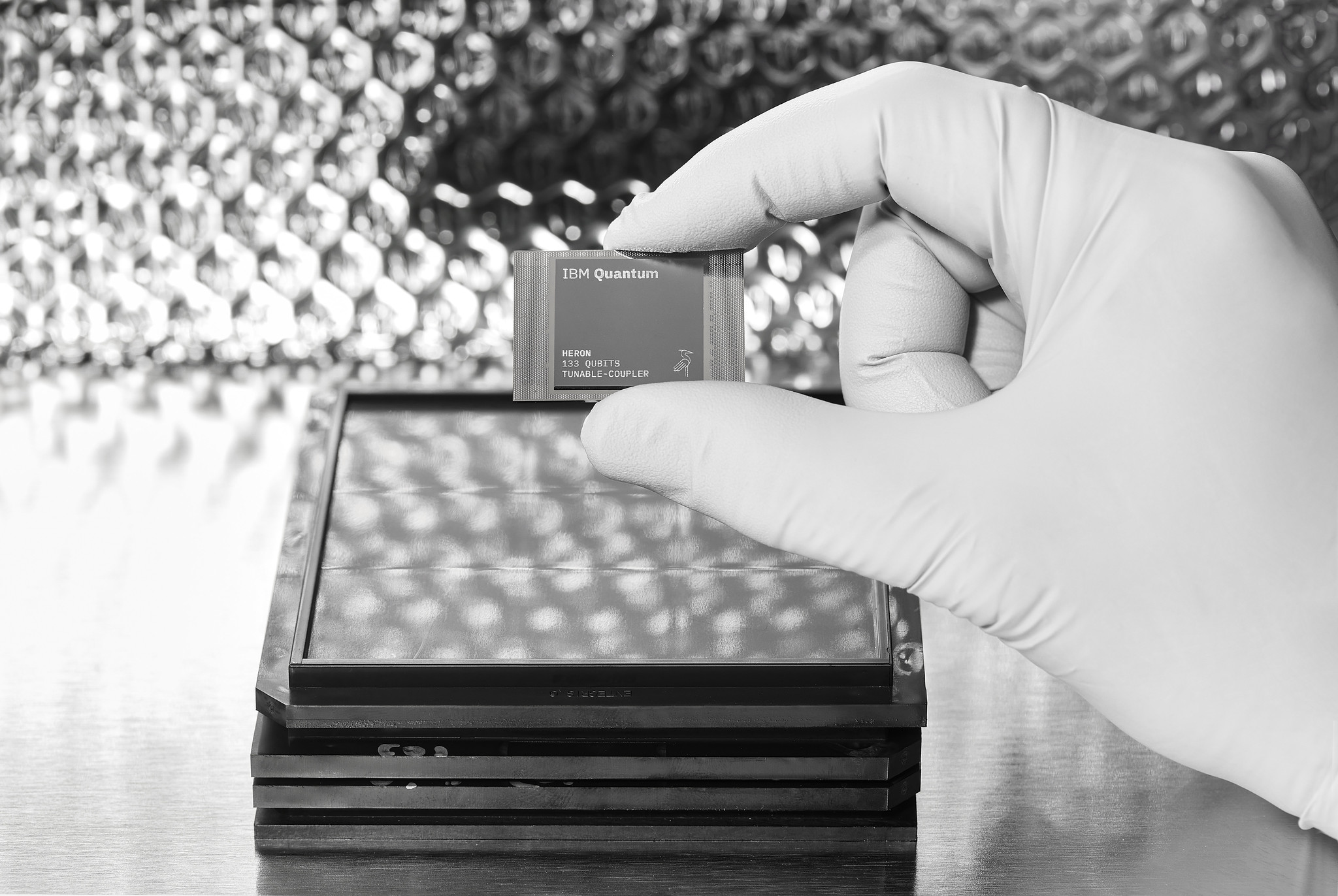 EMERGING TECH
EMERGING TECH
 EMERGING TECH
EMERGING TECH
 EMERGING TECH
EMERGING TECH
IBM Corp. today announced the launch of its newest quantum processor “Heron,” featuring 133 qubits of computing power that will serve as the foundation for a new series of processors capable of providing practical utility for science and research.
Alongside the new processor, the IBM unveiled the Quantum System Two, the company’s first modular quantum computer powered by Heron, during Quantum Summit 2023, the company’s annual quantum computing conference.
The technology giant also announced Condor, a 1,121-qubit processor that is part of IBM’s focus on long-term research into developing large-scale quantum computing efforts. In a press briefing, Mattias Stephan, chief quantum architect and IBM fellow, said the device packed 50% more qubit density, with over a mile of flex cabling. The efforts in building the device, he said “unlocked the road to scaling.”
Although the processor has a massive number of qubits, Stephan said it has comparable performance to the 433-qubit Osprey device debut in 2022. This is because simply stacking qubits doesn’t make a processor faster or more powerful, architectural changes are needed. According to Stephan, what IBM learned from Condor, and its previous Eagle quantum processor, paved the way for the tunable architecture breakthrough of the Heron processor.
“Heron is our best-performing quantum processor to date with up to a five-fold improvement in error reduction compared to our flagship Eagle device,” said Stephan. “This was a journey that was four years in the making. It was designed for modularity and scale.”
In 2021, IBM debuted the Eagle quantum processor featuring 127 qubits, becoming the first processor to break 100 qubits. Earlier this year, the company demonstrated that quantum processors can serve as the foundation for tools to provide as practical utility platforms for scientific research to solve problems for chemistry, physics and materials problems beyond brute force classical simulation of quantum mechanics. This opened up a variety of new use cases for researchers.
Since that demonstration, researchers and scientists at numerous organizations including the U.S. Department of Energy, the University of Tokyo, Q-CTRL and the University of Cologne have expanded their use of quantum computing to solve bigger and harder real-world problems such as drug discovery and tuning materials science.
“We are firmly within the era in which quantum computers are being used as a tool to explore new frontiers of science,” said Dario Gil, IBM senior vice president and director of research. “As we continue to advance how quantum systems can scale and deliver value through modular architectures, we will further increase the quality of a utility-scale quantum technology stack.”

The IBM Quantum System Two will become the foundation for IBM’s next-generation quantum computing system architecture, powered by three Heron quantum processors. As a unit, it combines a scalable cryogenic refrigeration infrastructure and classical servers with modular qubit control electronics. As a result, it will be able to expand to relate to future needs and IBM plans to use the system to house future generations of quantum processors.
The first Quantum System Two is housed in a facility in Yorktown Heights, New York.
To assist with enabling the use of quantum computing for developers, IBM announced that Qiskit will hit version 1.0 in February. Qiskit is an open-source software development toolkit for quantum that includes tools for writing and manipulating quantum programs and running them on the IBM Quantum Platform or a simulator.
Aimed at making it easier for developers and engineers to work with quantum computing, IBM announced Qiskit Patterns, a way to allow quantum developers to easily create code. It is a set of tools that will allow them to map classical problems, optimize quantum circuits using Qiskit Runtime and then process results.
“With Qiskit Patterns and Quantum Serverless you can build, deploy, run, and in the future, share for other users to use,” said Jay Gambetta, vice president of IBM Quantum.
Additionally, in a demonstration, Gambetta revealed that quantum developers will be able to use generative artificial intelligence powered by Watson X to make quantum circuits. Using this tool, a user would only need to write out a description of the quantum problem that they want to solve, and a foundation model named Granite, trained with Qiskit data, would do the heavy lifting for them.
“We really see the full power of generative AI to simplify the developer experience,” said Gambetta.
Support our mission to keep content open and free by engaging with theCUBE community. Join theCUBE’s Alumni Trust Network, where technology leaders connect, share intelligence and create opportunities.
Founded by tech visionaries John Furrier and Dave Vellante, SiliconANGLE Media has built a dynamic ecosystem of industry-leading digital media brands that reach 15+ million elite tech professionals. Our new proprietary theCUBE AI Video Cloud is breaking ground in audience interaction, leveraging theCUBEai.com neural network to help technology companies make data-driven decisions and stay at the forefront of industry conversations.